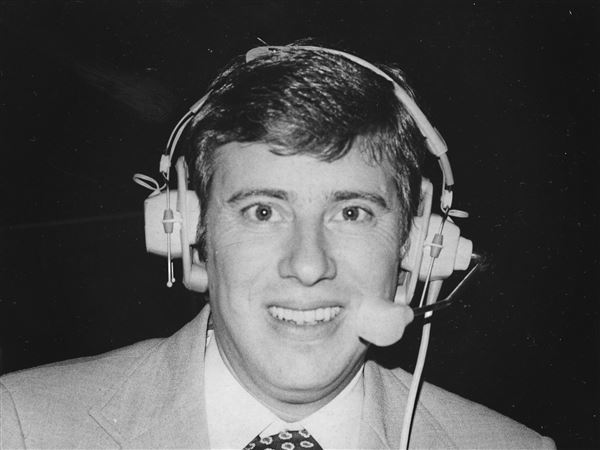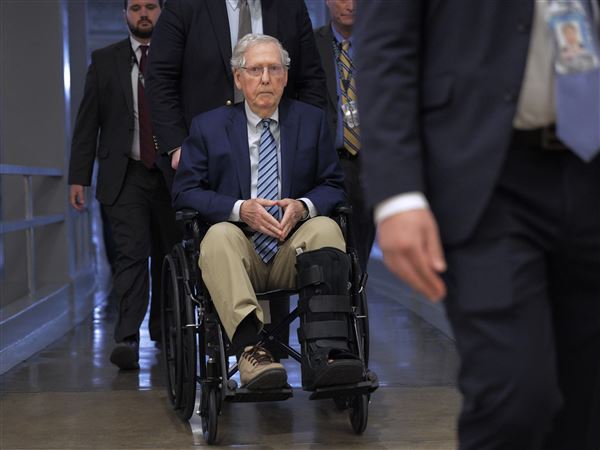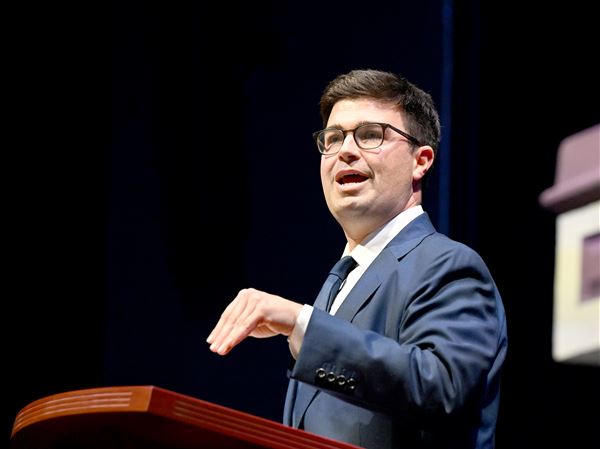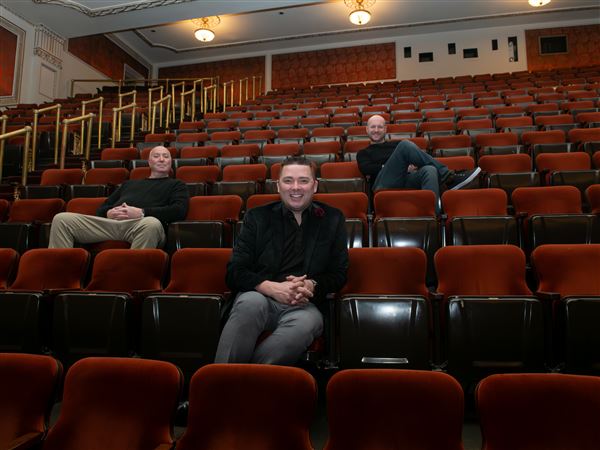WASHINGTON — Flashes of disagreement over how to fight the Islamic State are mounting between President Barack Obama and U.S. military leaders, the latest sign of strain in what often has been an awkward and uneasy relationship.
Even as the administration has received congressional backing for its strategy, with the Senate voting Thursday to approve a plan to arm and train Syrian rebels, a series of military leaders have criticized the president’s approach against the Islamic State militant group.
Retired Marine Gen. James Mattis, who served under Mr. Obama until last year, became the latest high-profile skeptic Thursday, telling the House Intelligence Committee that a blanket prohibition on ground combat was tying the military’s hands. “Half-hearted or tentative efforts, or airstrikes alone, can backfire on us and actually strengthen our foes’ credibility,” he said. “We may not wish to reassure our enemies in advance that they will not see American boots on the ground.”
Gen. Mattis’ comments came two days after Army Gen. Martin Dempsey, chairman of the Joint Chiefs of Staff, took the rare step of publicly suggesting that a policy already set by the commander-in-chief could be reconsidered.
Despite Mr. Obama’s promise that he would not deploy ground combat forces, Gen. Dempsey made clear that he didn’t want to rule out the possibility, if only to deploy small teams in limited circumstances. He also acknowledged that Army Gen. Lloyd Austin, commander for the Middle East, had already recommended doing so in the case of at least one battle in Iraq, but was overruled.
The White House and Pentagon have scurried this week to insist that there is no hint of dissent in the ranks, though in some cases, their efforts have only focused more attention on the issue.
Defense Secretary Chuck Hagel on Thursday tried to reassure the House Armed Services Committee that Pentagon civilian and military leaders were in “full alignment” and in “complete agreement with every component of the president’s strategy.”
Some lawmakers were skeptical. House Armed Services Committee chairman Howard “Buck” McKeon, R-Calif., suggested that Mr. Obama should listen more closely to his commanders. “I think it’s very important that he does follow the advice and counsel that he receives, the professional advice of the military,” he said. “They are the ones best suited to do that.
“I realize he’s commander in chief, he has the final say and the final obligation and responsibility,” Mr. McKeon added. “I would also request that he not take options off the table.”
Mr. Obama’s strategy received a boost with the Senate’s passage of his plan to train and arm about 5,000 Syrian rebels to help fight the Islamic State, a jihadist movement that controls large parts of Iraq and Syria and has threatened to destabilize much of the region. The 78-22 vote in the Senate came just a day after the House approved its own measure. Senate support came from 45 Democrats and 33 Republicans, while 10 Senate Democrats and 12 Republicans voted against the bill.
While the Senate sent the measure Thursday to the White House for Mr. Obama’s signature, votes this week demonstrated the tenuous support he has from his own party in carrying out the mission to “degrade and destroy” Islamic State forces. Several of the party’s rising stars, including Sens. Elizabeth Warren, D-Mass., and Kirsten Gillibrand, D-N.Y., rejected the proposal, while in the House, Mr. Obama’s proposal only won approval because a vast majority of Republicans backed him.
Many rank-and-file Democrats who did support Mr. Obama said they expect a broad debate in November and December, after the midterm elections, so legislation can be approved that would place broad constraints on the U.S. military’s ability to carry out the operation and place a specific deadline on the mission’s end.
Appearing after the votes, Mr. Obama thanked Congress “for the speed and seriousness with which they approached this issue” and noted that “a majority of Democrats and Republicans in the House and the Senate” had voted to train and equip the rebels. “We are strongest as a nation when the president and Congress work together,” he said.
Since Aug. 8, the U.S. military has launched 176 airstrikes against Islamic State targets in Iraq. Mr. Obama has signaled that the military will expand the strikes into Syria, but it is unclear when that new phase will begin.
Mr. Hagel testified Wednesday that he and Gen. Dempsey had approved a plan to conduct strikes against the Islamic State in Syria, and that Mr. Obama had received a briefing from Gen. Austin that same day at U.S. Central Command headquarters in Tampa, Fla. When asked if the president had endorsed the plan, however, Mr. Hagel acknowledged that Mr. Obama had not, but did not elaborate.
Divisions between Mr. Obama and his generals have become a recurring feature of his presidency. In 2009, shortly after Mr. Obama took office, Pentagon leaders pressured the new president — who had run on a platform of ending the war in Iraq — to deploy a surge of troops to Afghanistan to rescue the faltering fight against the Taliban. After a lengthy and tense internal debate, Mr. Obama did send more troops, but not as many as some commanders wanted. At the White House, Mr. Obama’s top aides privately expressed frustration that the Pentagon had tried to restrict his choices to get the result the military preferred.
At the Pentagon, military commanders expressed their own frustration last year as Mr. Obama weighed whether to take action in Syria following the determination that President Bashar Assad had employed chemical weapons against civilians. Although the Pentagon had internal disagreements about whether military action was warranted, there were widespread concerns that Mr. Obama was on the verge of ordering strikes without articulating goals or a clear strategy.
This time around, The White House and Pentagon agree on the basic outlines of a strategy to attack the Islamic State — one that centers on arming and training proxy forces, including Syrian rebels, Kurdish fighters and the Iraqi army, backed by U.S. and allied air power. But the Pentagon is eager to retain the option of deploying small numbers of Special Operations forces to the front lines to help the proxy troops or to call in airstrikes from close range.
Mindful of the president’s campaign pledge to end the last war in Iraq, which led to the withdrawal of all U.S. military forces in December 2011, Mr. Obama and his aides have insisted since May that he will not send Americans back into combat there.
But as the conflict with the Islamic State has deepened, and 1,600 U.S. troops have deployed to fill advisory and other roles, the White House has struggled to reconcile that reality with its prior statements that Mr. Obama would not put “U.S. boots on the ground” in Iraq. Military leaders have increasingly suggested that Mr. Obama’s political promises are restricting their ability to fight.
On Wednesday, former Defense Secretary Robert Gates, still an influential figure at the Pentagon, bluntly criticized his former boss. “There will be boots on the ground if there’s to be any hope of success in the strategy,” he said in a CBS News interview, adding that “the president, in effect, traps himself” by repeating his mantra that he won’t send U.S. troops into combat.
There are signs that the White House is becoming more flexible. Deputy national security adviser Antony Blinken allowed Thursday that “there may be cases where American advisers would go with some of the forces on the ground” or help “to call in some air power” — the kind of leeway the Pentagon wants. In an MSNBC interview, Mr. Blinken insisted that such deployments would not amount to combat “where Americans are on the ground leading the fight. That is not going to happen. That’s not part of this campaign. The president’s been clear about that.”
First Published: September 19, 2014, 4:00 a.m.
















